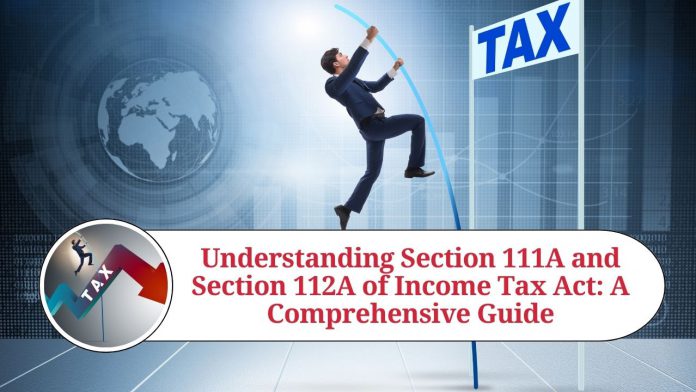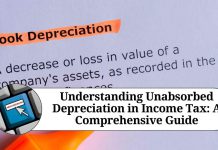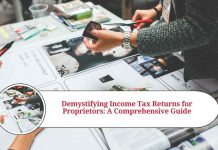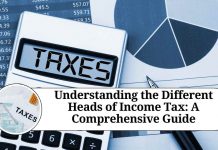When it comes to tax laws, understanding the intricacies of the Indian Income Tax Act can be a daunting task. The Income Tax Act has several provisions that taxpayers must abide by, and it is crucial to have a clear understanding of each provision. Two of the most important sections of the Income Tax Act are Section 111A and Section 112A. These sections govern the taxation of long-term capital gains on equity shares and equity-oriented mutual funds. In this blog, we will take a closer look at Section 111A and Section 112A and explore how they impact taxpayers.
Section 111A
Section 111A of the Income Tax Act deals with the taxation of long-term capital gains on equity shares and equity-oriented mutual funds. As per this section, any long-term capital gains arising from the sale of equity shares or equity-oriented mutual funds are taxable at a flat rate of 10%. This tax is applicable only if the gains exceed Rs. 1 lakh in a financial year.
The term “long-term capital gains” refers to any gains that arise from the sale of equity shares or equity-oriented mutual funds that have been held for more than 12 months. The tax is calculated on the gains realized after deducting the cost of acquisition and any expenses incurred in the transfer of the asset.
It is important to note that the 10% tax on long-term capital gains is applicable only to equity shares and equity-oriented mutual funds. Any other long-term capital gains are taxable at a rate of 20%.
Section 112A
Section 112A of the Income Tax Act deals with the taxation of long-term capital gains on listed securities, including equity shares and equity-oriented mutual funds. As per this section, any long-term capital gains arising from the sale of listed securities are taxable at a flat rate of 10%. This tax is applicable only if the gains exceed Rs. 1 lakh in a financial year.
The term “listed securities” refers to any securities that are listed on a recognized stock exchange in India. The tax is calculated on the gains realized after deducting the cost of acquisition and any expenses incurred in the transfer of the asset.
It is important to note that Section 112A supersedes Section 111A. This means that if a taxpayer sells listed securities, including equity shares and equity-oriented mutual funds, the tax on long-term capital gains will be calculated as per Section 112A. However, if the taxpayer sells any other asset that does not fall under the purview of listed securities, the tax on long-term capital gains will be calculated as per Section 111A.
Conclusion
Understanding the provisions of Section 111A and Section 112A is crucial for taxpayers who invest in equity shares and equity-oriented mutual funds. These sections determine the taxation of long-term capital gains on these assets. While Section 111A deals with the taxation of long-term capital gains on equity shares and equity-oriented mutual funds, Section 112A deals with the taxation of long-term capital gains on listed securities, including equity shares and equity-oriented mutual funds. It is important to note that Section 112A supersedes Section 111A. As such, taxpayers must ensure that they are aware of the provisions of both sections to avoid any confusion or errors in their tax filings.
Read more useful content:
- section 145 of income tax act
- section 10e of income tax act
- section 9 of the income tax act
- section 94b of income tax act
- section 206aa of income tax act
Frequently Asked Questions (FAQs)
Q: What is Section 111A of the Income Tax Act?
A: Section 111A deals with the taxation of long-term capital gains on equity shares and equity-oriented mutual funds. It provides for a flat tax rate of 10% on long-term capital gains arising from the sale of these assets, subject to certain conditions.
Q: What is Section 112A of the Income Tax Act?
A: Section 112A deals with the taxation of long-term capital gains on listed securities, including equity shares and equity-oriented mutual funds. It provides for a flat tax rate of 10% on long-term capital gains arising from the sale of these assets, subject to certain conditions.
Q: What is the difference between Section 111A and Section 112A?
A: Section 111A deals with the taxation of long-term capital gains on equity shares and equity-oriented mutual funds, while Section 112A deals with the taxation of long-term capital gains on listed securities, including equity shares and equity-oriented mutual funds. Section 112A supersedes Section 111A, which means that if a taxpayer sells listed securities, including equity shares and equity-oriented mutual funds, the tax on long-term capital gains will be calculated as per Section 112A. However, if the taxpayer sells any other asset that does not fall under the purview of listed securities, the tax on long-term capital gains will be calculated as per Section 111A.
Q: What is the tax rate under Section 111A and Section 112A?
A: The tax rate under both sections is a flat rate of 10% on long-term capital gains arising from the sale of equity shares and equity-oriented mutual funds or listed securities, subject to certain conditions.
Q: Are there any conditions to be fulfilled to avail the tax benefit under Section 111A and Section 112A?
A: Yes, there are certain conditions to be fulfilled to avail the tax benefit under both sections. Under Section 111A, the long-term capital gains must exceed Rs. 1 lakh in a financial year, and the gains must arise from the sale of equity shares or equity-oriented mutual




















